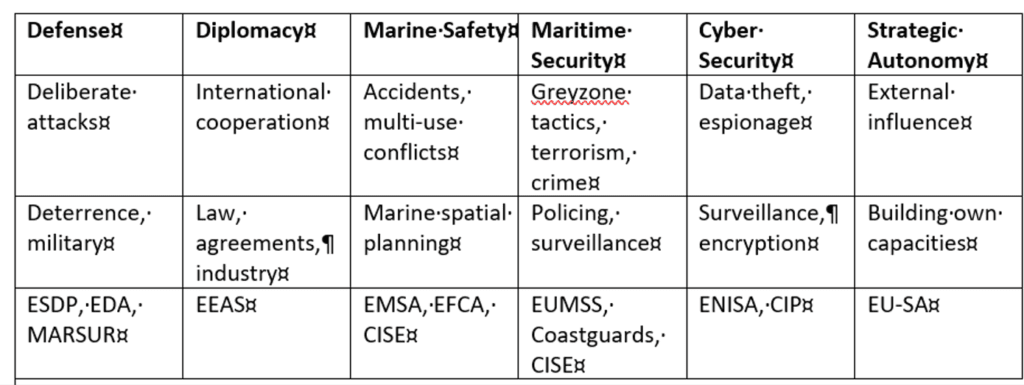The European Union is in the process of drafting a new Maritime Security Strategy (EUMSS) and critical maritime infrastructures is one of the issues it will address.
While the European Commission and the External Action Service are busy in developing a first draft of the strategy, a Working Party of the European Council is discussing what the strategy must focus on. Under the Swedish presidency of the Council, Member States will review and refine the first draft, which is expected to be issued as a communique in March this year. The final strategy is likely to be expected in autumn.
Briefing in Brussels
On February 15th, I had the pleasure to brief the Working Party at their meeting in Brussels. In my briefing, I first drew attention to the importance of maritime security strategy. Relying on research conducted with Tim Edmunds, I argued that strategies are key to deal with the complexity of maritime security, distribute roles and responsibilities, but also to agree on new challenges.
Three challenges are very important in this context: 1) how to response to geopolitical shifts, including the increasing use of grey zone tactics at sea, lawfare, and other disruptions, 2) how to relate the maritime security agenda to the climate and biodiversity crisis in the ocean, and ensure that maritime security forces contribute and revisit their roles, 3) how to protect critical maritime infrastructures.
Critical Maritime Infrastructure Protection
In the second part I discussed critical maritime infrastructure protection. I revisited the research we have done for the European Parliament in 2022, as well as the consequences and aftermath of the Nordstream attack. Zooming in on subsea data cables, I firstly argued that the cable system is not one, but several problems, and hence complex to deal with. The table below shows that analysis.

I then demonstrated how the EUMSS can make important steps to improve the protection and resilience of critical maritime infrastructures. Firstly, maritime infrastructures, should not be subsumed as a ‘sector’ under the critical infrastructure protection agenda, since the legal and political context is radically different to that on land. Secondly, awareness and education must be improved, to ensure that there is a proper understanding of how maritime infrastructures work.
Thirdly, a coordination body in the EU is required to ensure the exchange of information, best practices, harmonize laws across the EU, and facilitate a productive dialogue with the industry. Fourthly, existing maritime domain awareness and surveillance instruments, such as those of the Common Information Sharing Environment (CISE) must be used more effectively. Fifthly, given the inter-dependencies of the global cable network, the EU must seek strategic dialogue with countries, including the United Kingdom, Egypt, Tunisia and Morocco on how to ensure cable protection. Finally, the EU should pursue a ‘deterrence-by-denial’ strategy and improve the capacities available for rapid response and repairing infrastructures.